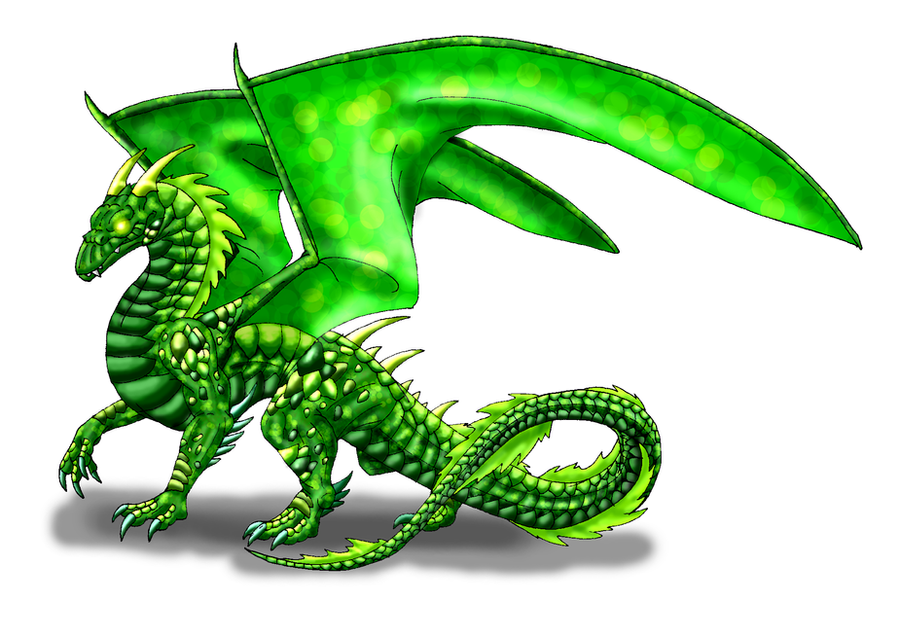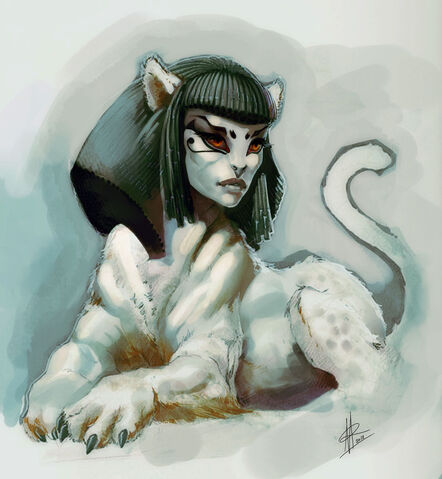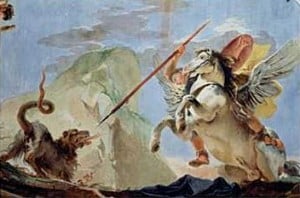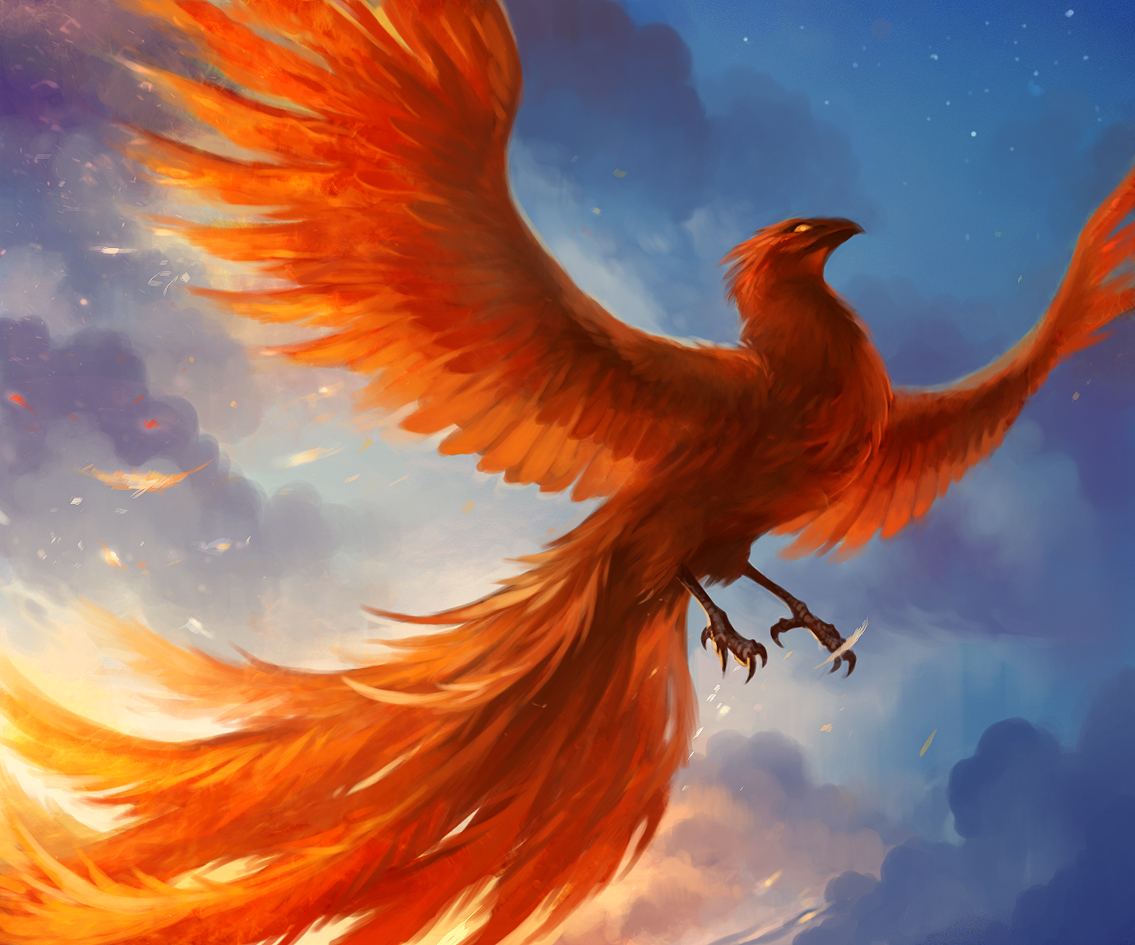Announcements
To any confused students:
With my co-professor's recent retirement, there may be some slightly confusing references to other instructors in the lessons (Professor Morgan). I am slowly beginning the process to ensure that this confusion is mitigated, but it will take some time. All lessons will eventually indicate the correct professor, and credits to the original author will be indicated at the bottom of the lesson itself. Slight modifications will be made in order to make this happen, as some descriptions, personal details, or reasoning will no longer make sense as it pertains to me, but these changes will be minimal and cosmetic.
In the meantime, this is an excellent opportunity to point out any issues of spelling, grammar, or content to me, as I will be going through each lesson individally. I can be contacted via owl.
Lesson 3) Greco-Roman Beasts and Monsters
The doors to Professor Morgan’s classroom swing open and the students stare with their jaws gaping at the images before their eyes. Trolls, Centaurs, winged horses, three-headed dogs, and many other creatures seem to be prowling through the room, jumping over desks and making menacing noises. A flick from Professor Morgan’s wand and the images fade away into the air from which they came. The students quickly file into the room, eager to learn more about the creatures they’ve just seen.
Welcome back, students! No, you have not accidentally arrived in a Care of Magical Creatures class, although the topic of magical creatures is certainly where our focus lies today. As you may recall from our previous two lessons, many Greco-Roman myths contain references to magical creatures. Some of these creatures are a direct representation of a real magical creature, while some of them are completely fabricated and truly mythological in nature.
Of course, not everything is so black and white, and as such you will find that some of the magical creatures found in Greco-Roman mythology may be simply misrepresented, or misunderstood by Muggles. These misunderstandings have led to confusion over which magical creatures are real and which ones are not. We will be demystifying a few of these jumbled up myths today as well.
Not So Real
To start us off, here are a couple of magical creatures in Greco-Roman mythology that are not, in fact real magical creatures.
Furies and Harpies: Thankfully, these winged creatures are not real. That said, if you’ve ever been in a classroom where a box full of pixies have been released, you may be able to relate to any myths containing these dangerous, flying menaces!
Satyrs: While similar to the four-legged Centaurs, the two-legged Satyrs are not real magical creatures.
So They DO Exist!
There are a great number of magical creatures in Greco-Roman mythology that are real, however the manner in which they have been represented in these myths may or may not be accurate. Remember, Muggle recordings of magical creatures can be a bit misleading, as they simply may not understand what it is they are seeing. Let’s examine a few of these creatures more closely.
Centaurs
The Centaur Chiron, Trainer of Heroes
The Centaurs found in Greco-Roman mythology are almost an exact representation of their real-world namesakes. Centaurs indeed have a body similar to a horse, and a torso and head of a human. They are not half-breeds, but a distinct species on their own. In both mythology and reality, Centaurs are very intelligent, and can use magic such as divination and even some potions. That said, most of the potions we are aware of them using are for healing, not harming.
The most significant discrepancy between mythological Centaurs and the real creatures can be found in the Heracles myth. As you may recall from our last lesson, the Centaur Nessus gave Deianira his cloak which had been poisoned with a potion that ultimately led to Heracles’s death. In reality, Centaurs don’t wear clothing of any sort. In fact, it is almost unheard of for them to wear any adornment whatsoever.
So how could this myth be accurate? We also know that Centaurs are diviners, and exceptional ones at that. It is possible that Nessus foresaw his own death at Heracles’ hands, and decided to plan his revenge instead of trying to avoid his fate? Possibly. But the Centaurs’ insistence on not interfering in the world of Men does cast some serious doubt on the validity of this particular part of the myth.
Dragons

Dragon references in Greco-Roman mythology are not frequent, as the area was not the native home for any Dragon species. That said, there are references in these myths to trained Dragons, or at least Dragons in servitude.
During our last lesson, we discussed the myth of Jason and the Argonauts, and you should remember that there was a dragon guarding the Golden Fleece. Given the location of the Kingdom of Colchis on the eastern shore of the Black Sea, it is hypothetically possible that the King of Colchis procured a dragon from a country found along the edge of that body of water, due to the trade routes that would have existed between them. The Dragon in the myth could therefore be either a Romanian Longhorn or a Ukrainian Ironbelly. I suspect it was the former, as the thought of only a handful of people taking down an Ironbelly is hard to imagine, not to mention keeping a Dragon of that size imprisoned for a long period of time is incredibly difficult now, let alone over 1000 years ago.
Sphinxes

Ah the riddle of the Sphinx. Actually, yes, they are a riddle unto themselves! If you study mythology in any depth, you will quickly discover that there are two distinct descriptions of Sphinxes: the Greek Sphinx and the Egyptian Sphinx. The Greek Sphinx was said to have the face of a woman, as well as wings, and loved riddles. The Egyptian Sphinx was described has having the head of a man, but no wings. They were not known for riddles, but simply a sense for guarding things. Common to both myths was the body of a lion.
In reality, there are variations among Sphinxes. Some have wings, and some do not. Of course, there are male and female Sphinx as well. The riddle component to their personality is something that developed over time and exposure to different cultures. Innately, they are guardians. They seem to be instinctively drawn to places where they can guard something - even if they haven’t been asked to! Their love of riddles is something that emerged over time with their exposure to civilizations such as the Greeks. Perhaps it was the Greek love of comedy and tragedy stories that gave rise to this fascination in the Sphinxes. One thing is certain - guarding something day and night with no rest certainly gives you plenty of time to think up a good riddle!
Three-Headed Dogs

Cerberus, Guardian of the Underworld
One of the creatures about which the Muggles seem to have all of their facts straight is the Three-Headed Dog. This rather rare creature is indigenous to Greece, and so it should not be surprising that Greek Muggles and Wizards alike knew of them. Both Cerberus from the myth of the 12 labours of Heracles as well as actual Three-Headed Dogs have a weakness for music. You may recall that a certain Three-Headed Dog by the name of Fluffy once briefly inhabited the castle. In that particular case, the creature was subdued by the music from an enchanted harp. Heracles also used music to sneak past the Three-Headed Dog named Cerberus in order to gain access to the underworld to complete one of the tasks he had been assigned.
Given this widely-known creature, it is quite possible that the saying “Music has charms to soothe a savage beast” may be a reference to the manner in which to survive an encounter with the beast. My advice? When travelling in remote parts of Greece and Ireland, bring a flute. Learning how to play it well would also be advantageous. And yes, there is a colony of Three-Headed dogs in Ireland, most likely brought there by the Romans during their failed attempts to annex the land.
Winged Horses and Chimaera

Bellerophon fights the Chimaera while atop the Winged Horse, Pegasus
One of the most fascinating accounts of magical creatures in Greco-Roman mythology centers around the hero, Bellerophon. We did not cover this particular hero in our lesson last class, however some of you may have chosen to write your essay on him.
Bellerophon is most famous for two things: riding the Winged-Horse, Pegasus, and killing a Chimaera. In fact, Bellerophon is the only person who is known to have killed a Chimaera, which means that if you check your copy of Fantastic Beasts and Where to Find Them, he is the wizard credited with that victory.
Of course, that also means he is the same wizard who managed to fall off of his horse and become lame. Bellerophon was a bit of a pompous cad, and after his victory over the Chimaera, as well as the armies of a few nations, attempted to fly to Mount Olympus as he believed he belonged there. Zeus was not impressed and caused Pegasus to unseat Bellerophon, leading to his rather abrupt introduction to humility. In truth, if Bellerophon had not been a wizard with magic to cushion his fall, he most likely would have perished instead of simply becoming unable to walk for the rest of his life.
Now the Chimaera in question is exactly as we would describe a classical Chimaera today. They have the head of a lion, body of a goat, and the tail of a Dragon. Similar to the Three-Headed Dog, the Muggle accounts of Chimaeras are very accurate as the creature is native to Greece. You wouldn’t forget an encounter with a Chimaera. That is, if you managed to survive!
On the other hand, surviving an encounter with a Winged Horse, the other magical creature found in the Bellerophon myth, would be significantly easier, as Winged Horses are usually even tempered, and easily tamed by witches and wizards. You may be aware that there are four types of Winged Horses in existence. You would think that determining which category Bellerophon’s Winged-Horse, Pegasus, belonged to would be easy, however that is not the case. Clearly not a Thestral, Pegasus was too small to be an Abraxan, but being pure white also means that he doesn’t easily fit into the Aethonan or Granian classifications either. While I am not an expert on Winged Horses, my best guess is that Pegasus was an albino Granian, as the speed Pegasus would have needed to assist Bellerophon in his quests would most likely be found in a member of that family.
Now does the existence of Bellerophon as a real historical figure also mean that Zeus, who caused his lameness, also exists? Not necessarily. Only Bellerophon recounted the tale of how he fell off of Pegasus. While he stated that Zeus was at fault, it could just have easily been an error in judgement or a state of inebriation that caused the fall.
Griffins

The Griffin is said to be a sacred animal to the Greek god Apollo, and therefore to the Greeks themselves. The body of a lion and head and wings of an eagle give this creature quite a regal stature, and their intelligence was said to be equal to that of a Sphinx. While Griffins are common in Greco-Roman mythology, they are also found in Ancient Persian and Ancient Egyptian mythology, indicating that humans have had interactions with these creatures for thousands of years.
Given our long-lasting encounters with Griffins, it is unsurprising that the description of them in Muggle myths matches up with the magical creature that we know in more detail. Griffins are often employed as guardians, much like Sphinxes are, as they are ferocious and loyal creatures. You can befriend a Griffin, as long as you are very gentle, humble, and patient. Having some raw meat with you to feed the Griffin would also be advantageous in securing a long-lasting friendship.
A friendship can also be made with the offspring of a Griffin and a horse, namely a Hippogriff. If you would like to learn more about Hippogriffs and mythology, I suggest you take Year Five of Care of Magical Creatures wherein I will make a brief appearance on this very topic!
Phoenixes

Again, the Muggles have the descriptions and mannerisms of these creatures mostly correct, however I am not going to go into great deal about these creatures during this lesson as they are not actually native to the Greco-Roman Empire. That said, they do appear in minor myths of this culture as these creatures were most likely either brought by Eastern trading partners or encountered by travelling Greco-Romans who then returned with the stories of what they had seen.
Wait, What?
One more topic for us to cover today: the times when Muggles got it completely wrong! You may find a few of these surprising, but I am certain you will also be able to see the truth of how these misunderstandings occurred.
The Minotaur… was a River Troll?

The Minotaur, or rather, a River Troll
Yes, a River Troll. But let’s recap the highlights of the Minotaur first. Humanoid stature, horns like a bull, ate people. Generally stupid, as he simply wandered around a labyrinth for decades without finding his way out, and incapable of human speech. He would have had to like moisture, as the Labyrinth was located underneath a castle on the edge of the sea, and most likely had pools of water in its various caverns.
Other than the myth’s reference to the “head of a bull”, the description fits that of a River Troll completely. Given that the vast majority of people who encountered the Minotaur became his lunch, Theseus’ recollection of the events in that dark, damp labyrinth are the only facts on which we can base our assessment. If Theseus had never encountered a troll before, it is quite likely that when he defeated the creature he noted its horns, and surmised that it had the head of a bull. With all of the other characteristics matching that of a River Troll, this myth is one where the Muggles simply did not know enough about magical creatures to accurately determine what they were seeing.
Herpo the Foul and his Fowl Magic
Our final discussion is perhaps one of the most fascinating and terrifying of the lesson as it centres around the ancient Dark Wizard, Herpo the Foul. I am sure you have heard about this wizard in some of your other classes (specifically the Lesson Three of Year One Defence Against the Dark Arts) so I will not go into great detail. For our purposes today, it is important that you understand he was the one who first bred a Basilisk, as well as who discovered the way to make a Horcrux. Dark magic indeed.

There are references to Basilisks in Greco-Roman mythology, however you may not have recognized them. There is one reference in particular worth pointing out wherein the god Apollo kills the giant snake Python.
While not what you and I might think of as a Basilisk, this creature was part of that family. It seems that Herpo bred several different types of Basilisks. Changing the type of chicken or toad that was used to create a Basilisk does change the type of Basilisk that emerges as a result. In this particular case, the creature was somewhat smaller with a flatter snout than the Basilisk discovered here at Hogwarts a decade or so ago. Regardless of its stature, Python was just as deadly as its larger relatives.
Even more terrifying than the creation of the Basilisk is the ability to tear a piece of one’s soul from one’s body and hide it in an object by means of killing another person. Indeed, the Horcrux is Herpo’s most terrifying magic, in my personal opinion. Both Horcruxes and Basilisk eggs were used when Herpo helped turn three dark witches into the Gorgons.

The three sisters, Medusa, Euryale, and Stheno, were looking for a way to become immortal and to thwart their enemies with ease. Herpo, possibly curious to see the effect of his magical creations in action, happily acquiesced to their request and gave them three Basilisk eggs as well as instructions on how to create Horcruxes.
The sisters crushed the Basilisk eggs and rubbed them into their hair. Their human hair fell out very quickly, and in its place grew snakes instead. The eggs had an added effect of making the sisters’ gaze deadly as it, like the Basilisk’s, would petrify the viewer.
The sisters then proceeded to the final part of their plan - becoming immortal. They followed Herpo’s instructions and created at least one Horcrux each. Something must have gone wrong with Medusa’s horcrux, however. Perhaps she was unable to complete the process, or the piece of her soul was not properly put into an object. Whatever the case, she was disfigured in the process, and did not achieve immortality, leaving her vulnerable when Perseus came to claim her head.
One thing about this myth has always concerned me. What happened to Herpo and the other Gorgons? With the Horcruxes, they could not easily be killed. As we have not heard mention of them for centuries, I sincerely hope that they, and any horcruxes they may have made, have been completely and utterly destroyed.
On that somewhat unpleasant thought, we have come to the end of our lesson! While we have not discussed every magical creature found in Ancient Greece and Rome (Unicorns and Manticores were also present, for example), I do hope you enjoyed a taste of the many magical creatures we did examine today. Our next lesson will cover a few final aspects of Greco-Roman mythology before we move on to Norse Mythology. In the meantime, you will have a quiz to complete on today’s material.

____________________________________________________
Sources:
Cotterell, Arthur & Storm, Rachel. 1999. The Ultimate Encyclopedia of Mythology. Hermes House Anness Publishing Ltd. New York.
Grimal, Pierre. Ed. 1989. Larousse World Mythology. Gallery Books, New York.
Hamilton, Edith. 1940. Mythology: Timeless Tales of Gods and Heroes. Mentor Books, New York.
www.harrypotter.wikia.com (various entries)
- MYTH-401
Enroll


